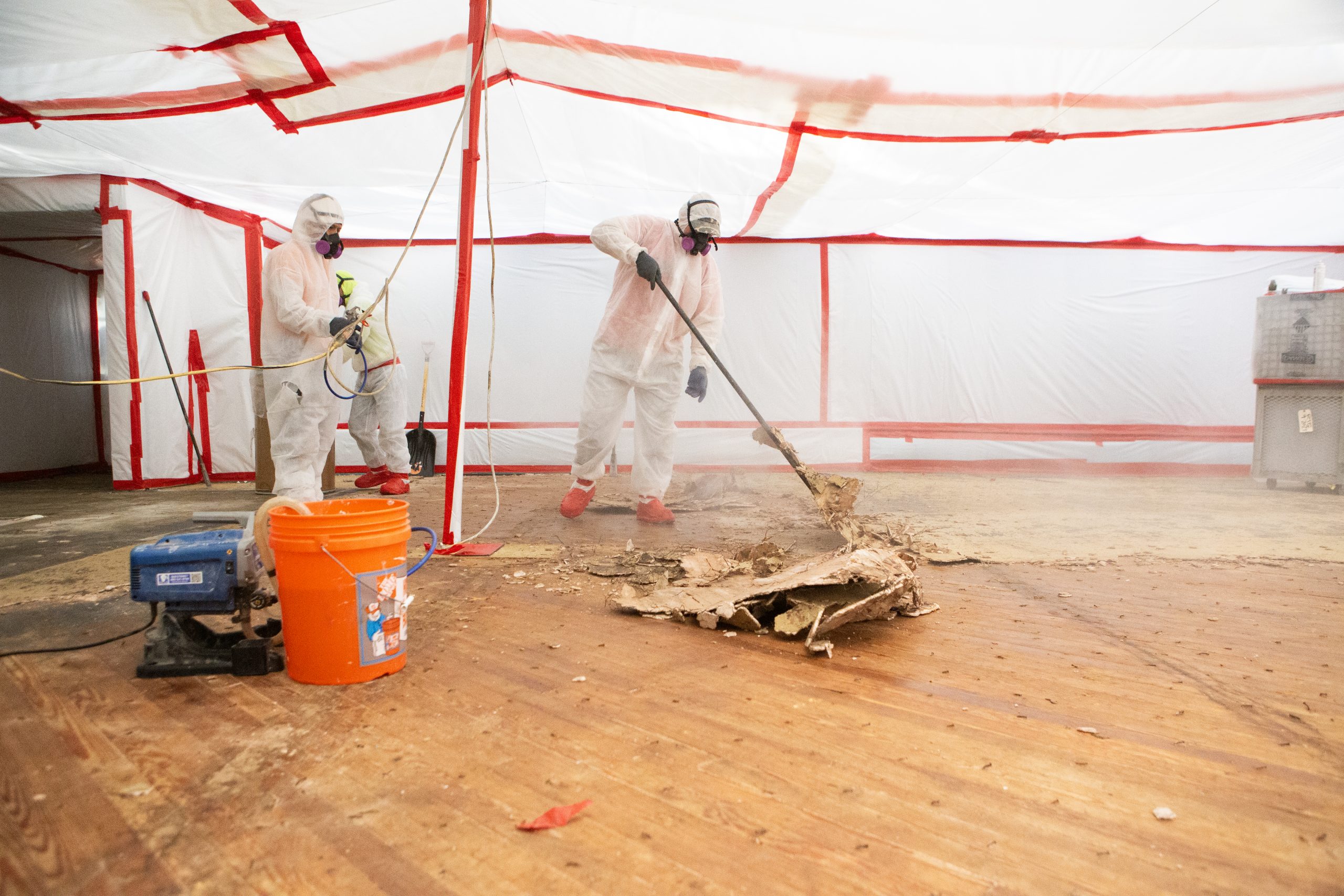
Asbestos Survey vs. Asbestos Abatement – Know the Difference
What is an Asbestos Survey?
An asbestos survey (also known as an asbestos building survey) is designed to document and identify the presence of asbestos-containing materials (ACM) in a building, especially before demolition or renovation activities.
An asbestos survey also involves quantifying the amount of ACM that needs to be removed, and provides recommendations on how to avoid disturbing them or releasing asbestos fibers into the air, thus minimizing worker exposure during demolition/renovation.
When Should an Asbestos Survey Be Done?
Asbestos surveys are often required before beginning any renovation, demolition, asbestos abatement, or other activity that could impact suspect material. An on-site evaluation must be conducted.
Asbestos surveys or inspections are required by federal rules and regulations set forth
by OSHA and the US EPA, as well as many state regulations, and even some local codes.
Also, asbestos surveys can be performed for buildings that are suspected to have been damaged due to natural disasters, such as a flood, that may have compromised a building’s structure.
What Is “Due Diligence?”
Environmental surveys, including asbestos surveys, are conducted as a way of managing risks, and they are part of your legal responsibilities especially if you are in the construction industry, or conducting a real estate transaction.
Many building departments won’t issue permits for construction
if an asbestos survey is not completed
Laws and regulations requiring an asbestos survey for buildings undergoing demolition or renovation are there to protect the workers and building occupants from exposure to asbestos fibers. Sellers and buyers may request an asbestos survey during commercial real estate transactions.
Who Should Perform an Asbestos Survey?
An asbestos survey, including sampling and laboratory analysis, should only be completed by certified asbestos consultants.
Asbestos consultants or inspection firms should be able to demonstrate industry experience, proper licensing, and adequate professional liability insurance coverage for environmental testing services. It’s important to make sure that any asbestos consultant you choose is qualified in your industry and properly protected from any potential misjudgment during the testing or inspection project.
Asbestos Testing Process and Survey Reporting
Since the presence of asbestos cannot be identified through smell or visual inspection, asbestos testing through sampling and laboratory analysis is the only way to identify it.
Accurate results can help you plan how to safely remove or manage the asbestos.
There are several important steps in the testing/inspection process:
- A thorough visual inspection of the affected building space
- Quantification and location of suspect material
- Bulk sample extraction
- Laboratory analysis
- Recommendations
- Survey reporting
- Field Inspection
Field inspections involve visual inspection and assessment of areas in a building that are suspected to have ACM where the friability of the materials is tested.
Why Is Sampling Important?
Taking only one sample in one area may not provide the full extent of the possible presence of ACM. Regulations stipulate specific numbers of asbestos samples be taken from each type of material. Sampling of different areas/locations of the same material is important to confirm that testing indicates the presence of asbestos-containing materials.
Having a highly qualified, experienced, and independent inspection firm is critical.
Prevent Unexpected Costs & Delays
You may encounter unexpected costs and delays caused by asbestos-containing materials which can compromise your project’s timeline and profitability if you don’t conduct an asbestos survey.
Projects can be stalled or shut down if asbestos is found disrupting the entire project and creating costly delays. And a tight construction job market can create staffing challenges when projects resume. You do not want to face work site disruptions because you failed to conduct an asbestos survey.
Guidance for Proper Asbestos Abatement
What is Asbestos Abatement?
Once asbestos has been found through surveying and testing, the process of removing or mitigating the effects caused by this mineral is called asbestos abatement.
Asbestos abatement does not always necessitate removal, because when asbestos is undisturbed and intact, it can often be kept in place with minimal risk of exposure.
If there is enough risk present or the ACM will be impacted by renovation or demolition, a workplan to safely abate the substance needs to be prepared before removing or otherwise handling this toxic substance.
When Should You Perform Asbestos Abatement?
Below are some situations that might require professional asbestos removal:
- When the materials are suspected to have been damaged by a recent natural or manmade disaster
- When you are planning to renovate or remodel a building with other activities involving the disturbance of the suspected materials
- Prior to the demolition of buildings built before the 1980s
- If suspected materials are showing signs of damage
Tips for Finding a Reliable Asbestos Abatement Company
- Make sure that they are licensed to do asbestos abatement in the municipality which the project is located.
- Ask how they are going to remove, clean, and dispose of asbestos-containing materials (ACM)
- Get a good understanding of which type of asbestos consulting firm offers which services. Some firms are experts in surveys and testing, while others are experts on abatement and removal.
Compliance Consultants, Inc. Provides Asbestos Testing and Monitoring
Let us be your partner for the first phase of asbestos mitigation.
Compliance Consultants, Inc. has highly trained professionals working in the area of asbestos surveying, testing and monitoring and offers a variety of services related to the detection of asbestos.
Contact us before you encounter costly project delays.



